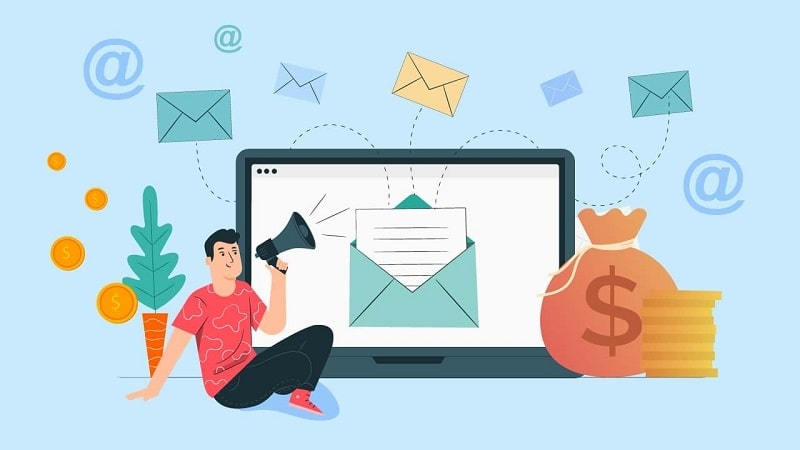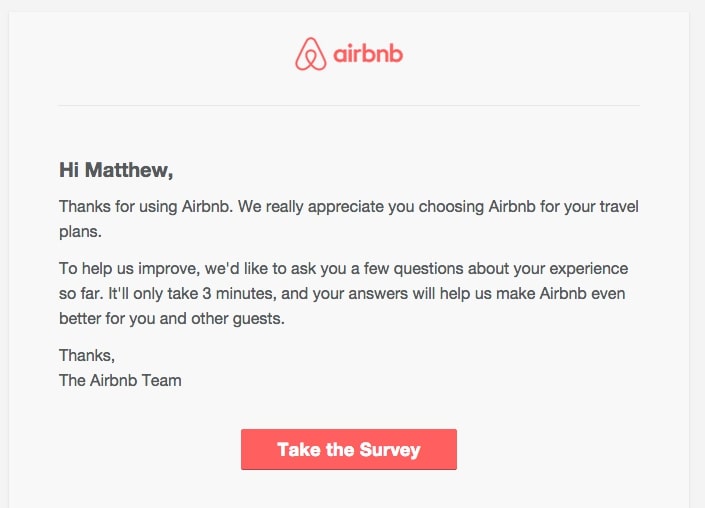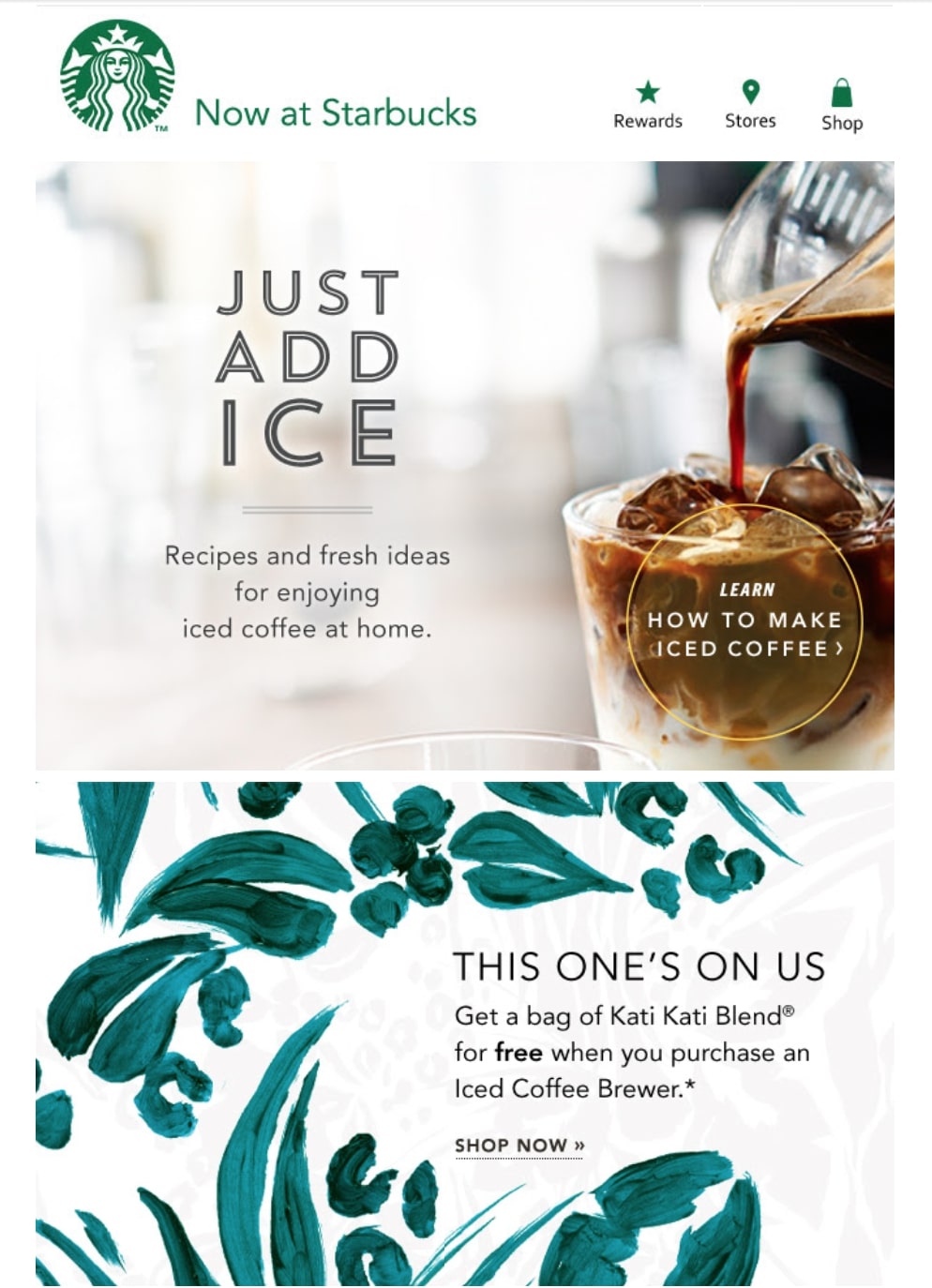12 Best Email Marketing Ideas for Growing Your Business in 2024
When used correctly, email can be one of the most effective marketing methods available. According to data, small business owners classified email marketing as one of their most successful mediums for increasing brand recognition. Furthermore, 59% of customers say email marketing influenced them to make a purchase.
Message personalization is a common and successful technique used by email marketers. Sending specific emails based on a customer’s actions and sales funnel will increase the probability of them purchasing your product in the long run. In this section, I’ll share with you some email marketing ideas to help you boost your campaign performance.
What is email marketing?

Email marketing is a type of internet marketing in which a business sends promotional messages or materials to groups of people via email. These messages usually include newsletters, promotional emails, sales pitches, etc.
Any type of email with this type of business content can be called email marketing, and their aim is to acquire new customers, create or improve a company’s relationship with their current customers, and have customers consider doing repeat business with them. So how can you use email marketing to achieve these goals? Here are some ideas you can try out.
12 Best email marketing ideas for growing your business
1. Segment your list
Segmentation email list — grouping consumers based on details such as who they are, where they live, what they are interested in, and more — is one way to keep the audience interested.
TRX, a company selling sports equipment (particularly common among CrossFit fans and physical therapists), aims for segmentation with an initial survey question in their email sign-up form, as seen in the example below. Knowing whether their subscriber is a fitness instructor, a gym owner, or someone who simply works out at home will help them craft the most appropriate offer.

2. Send welcome emails to new subscribers
If you examine your email open rates closely, you will find that new users outperform those who have been on your list for a longer period of time. This is due to the fact that when someone chooses to enter your mailing list, they are more interested in what you have to offer.
When new subscribers do not take prompt action, there may be a problem. They may not have made a purchase or visited your page yet, but that doesn’t mean they aren’t interested in what you have to offer. Often it’s because they’re unmotivated or don’t know what to do next.
Using a method known as customer welcoming email to assist new subscribers in making decisions more quickly. Send a sequence of emails one by one. Each covers the most important aspects of your business, such as how to place an order, how to contact customer service, the return policy, or your best-rated items.
Welcoming is also an excellent time to direct new subscribers to other relevant URLs, such as your social media sites or a link to download your app and access the store when on the go.
3. Use Email sequences
Creating email sequences is a sure-fire way to improve your email marketing. It not only automates a time-consuming process, but it also increases the likelihood of your campaigns converting. If you’re welcoming new customers to your email list or sending deals to maximize their buying value, automated email sequences may generate significant conversions that would otherwise be missed.
Email sequences will relieve you of a significant amount of work. Triggered emails, when paired with segmented email lists, will ensure that highly targeted messages are sent to your leads and customers at the optimal time for performance.
4. Ask your customers for feedback
Knowing how your customers think about your brand is, of course, important. But how valuable is an opinion? Consider the following statistic: According to a BrightLocal.com poll, 76 percent of customers trust online feedback as much as recommendations from friends and family.
There are many benefits of soliciting feedback from your customers. You can use feedback to learn more about your target market and improve your product. Best of all, you can use them as social proof in your interactions. Here’s an example of AirBnB asking for feedback from their customers via email.

5. Incentivize Your Audience
Try offering subscribers something if you’re looking for a better way to get people to engage at the top of the sales funnel. People enjoy receiving coupons, exclusive deals, and, of course, anything for free.
If you’re selling something, give away a free trial. If you’re offering a service, give it away for free for a limited time. When you do this, you are adhering to the fundamental marketing concept of “Green Eggs and Ham.” You’re asking people to try it so they can see if they like it.
Here’s an example of a free drink from Starbucks. We like how they phrase the offer—rather than starting with “free coffee,” they claim, “this one’s on us.” It’s a nice way to say “thank you” to customers without sounding spammy by sprinkling the word “free” in the text.

6. Recover abandoned carts
While abandoned carts are not an issue in the offline world, they are a major concern for most e-commerce businesses. Not surprisingly, over 79 percent of all online shopping carts are abandoned, according to SaleCycle.
With all of the effort you put into acquiring new leads, you’d want to reclaim some of those who don’t complete their purchase to save your spent marketing efforts. You can accomplish this by sending out behavior-triggered messages designed to entice customers to return to your shop.
Cart abandonment emails are widely used by online retailers. They’re successful and easy to implement, particularly if the user’s reason for leaving the site isn’t due to the offer, but rather to some other distraction.
7. Send birthday and anniversary emails
Everyone enjoys receiving presents, whether from relatives, coworkers, or even yourself. As a result, a customer’s birthday or anniversary may be a good time to offer a deal.
An automated email with a discount in celebration of your customer’s birthday will reinforce their feelings for your brand. Furthermore, they already believe they deserve a present, making it easier to convince them to buy something for themselves.
8. Use split testing
Split testing is the most effective method for determining the best-performing email campaign. The great thing is that you can test a variety of variables, including the name, subject line, content, call to action, submit time, and more.
Test what works best:
- CTA as a button or link
- Fewer or more images
- ‘Shop now’ vs ‘Discover here’
- Blog placement – right or left?
- Bestsellers or hottest drops
- Etc.
9. Run re-engagement campaigns
You’ve probably heard this before: most marketers believe that retaining current customers is less expensive than acquiring new ones. So, why not try to re-engage customers who have not been active for a while?
To run re-engagement campaigns, determine the right amount of time to consider a subscriber as inactive. A lack of email opens for 90 days is a reliable indication that the consumer is uninterested in businesses such as fashion retailers. Others, such as an online store selling fitness accessories, can have a longer time.
Once you’ve defined your inactive subscribers, contact them. However, don’t just make a regular offer. Make it exclusive and personalized, and ensure that the subject line stands out from the rest of the emails in their inbox.
10. Create dedicated landing pages for email marketing
In their marketing emails, brands sometimes tell fantastic stories about their goods and services, but then direct their audience to generic product grids. With this approach, brands risk a high bounce rate because redirected subscribers will not find the product that piqued their interest in the email, and they just leave.
You should instead create dedicated landing pages for all of your email campaigns. This allows you to improve your storytelling and attract visitors with a colorful mix of various content styles such as purchasing guides, lookbooks, and tutorials.
11. Send recommendations
You have data about what the customers have bought or added to their wish list. You also know what goes well with those things or what other people have bought with those pieces. Why not send out related deals accompanied by product recommendations?
Recommendation emails perform well because recipients immediately recognize that the deal is tailored to their specific needs. That it is a commodity that they looked for and hoped to purchase, but it was out of stock. Or simply that it would go well with what they have already purchased and fallen in love with.
Take advantage of this opportunity to personalize your deals. Use the details you’ve gathered about your target group to give them something they won’t want to skip.
12. Design a your email with convenience in mind
Customers are busy these days. Wouldn’t it be wonderful if your email could save them time? One of my favorite email marketing tips is to design promotions that make it simple for people to become customers by pointing them to the items you’re promoting. Here’s a J. Crew example. Customers can “copy this outfit” with the click of a button, according to the company. They won’t have to go shopping for the shirt, jeans, cardigan, and shoes separately.

Final words
That’s it! I hope that this article has provided you with many great ideas for launching your next email campaign. Please feel free to leave comments below for further discussion on this topic!
New Posts

How To Set Up Google Analytics 4 For Your BigCommerce Store






